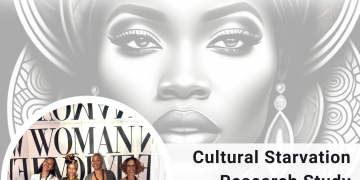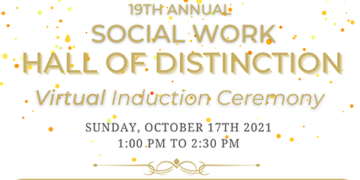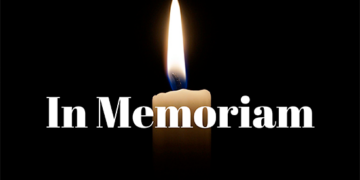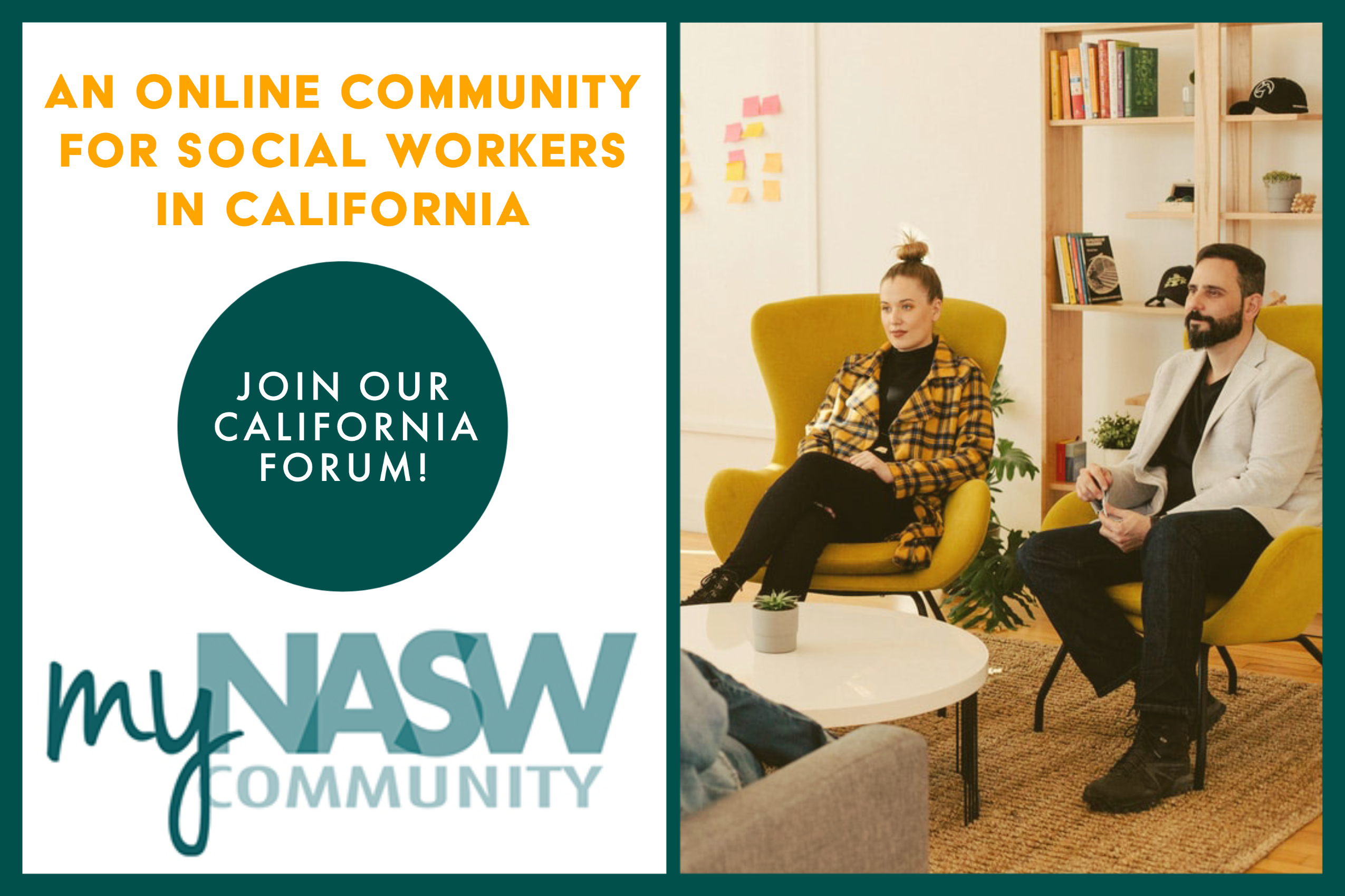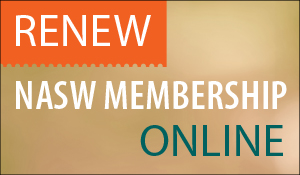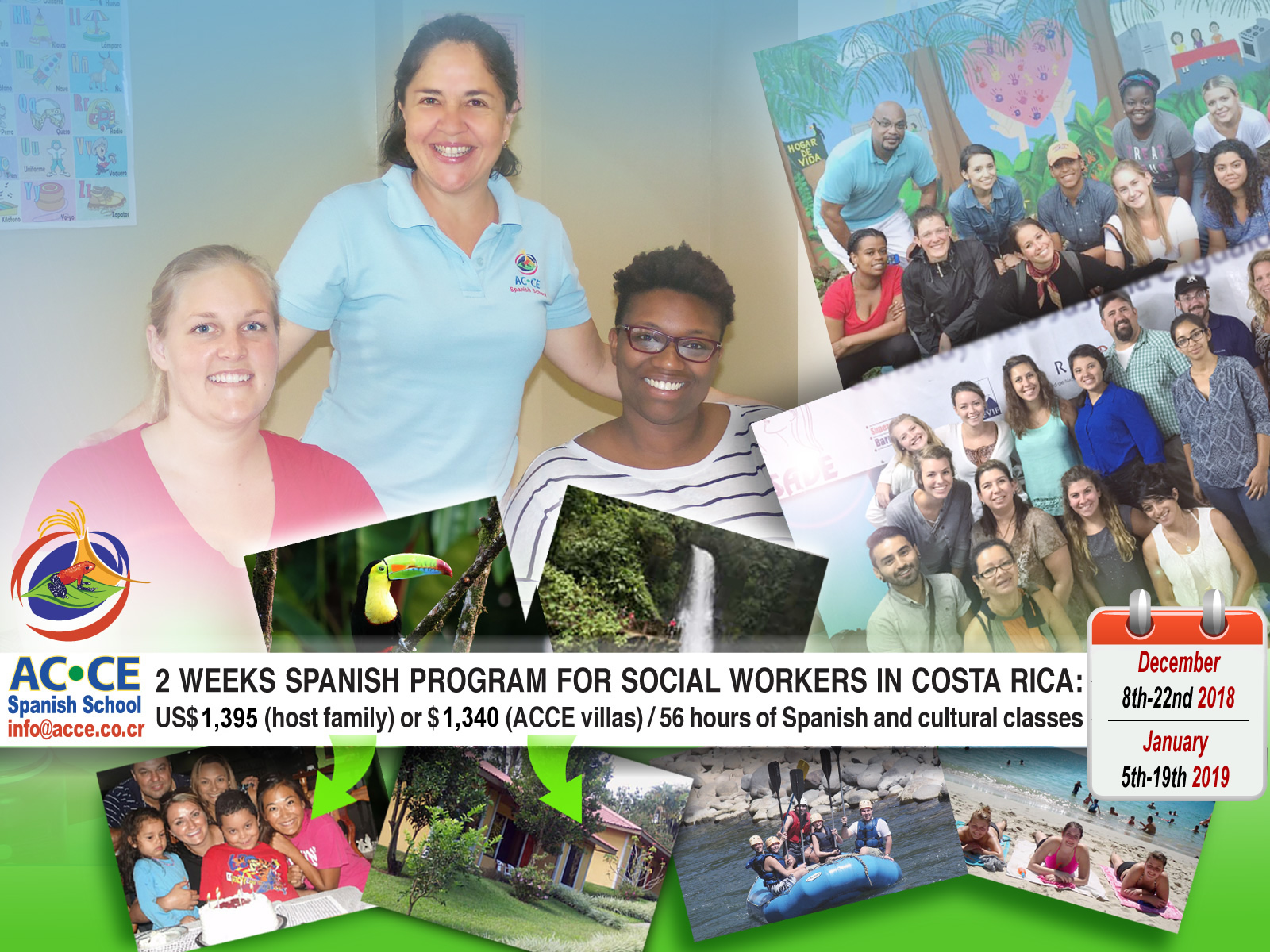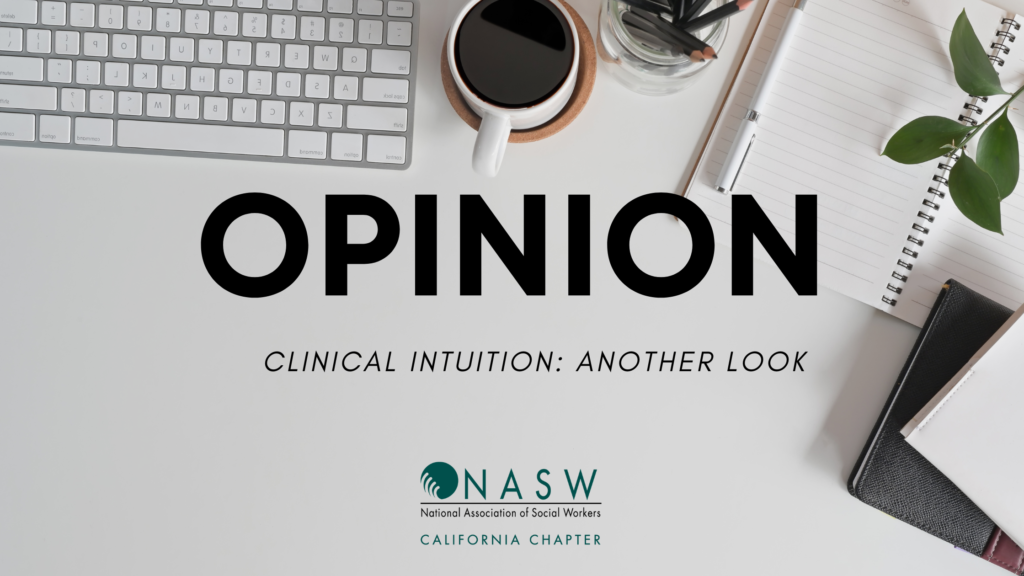
While we are proud to feature opinion pieces from our members and colleagues in the field, be advised that opinions and advertisements shared by NASW-CA do not necessarily reflect the views of the National Association of Social Workers, CA Chapter.
By Allison D, Murdach MA, ACSW, LCSW
Clinical intuition has become a much-studied phenomenon in the health field during the past few years, much of it inspired by Schon’s earlier work (Schon, 1996). Social work is no exception to this trend, though a bit slow to show increased interest in this area. It appears that nursing and medicine, not social work, are the two professions most interested at present (Wooley & Kostopoulou,2013). We will discuss some reasons for this situation below.
What Is It? Sometimes called first knowledge or tacit awareness, there seems to be little agreement about the exact nature of clinical intuition. Several of its principal features have been described (Wooley & Kostopoulou, 2013). These are summarized in the typical definition of clinical intuition as an immediate apprehension or cognition without reasoning. Most authors describe clinical intuition as immediate or sudden, and view it as not rational, or the result of reason or logic. It is also seen as an understanding that is immediately true and correct. Some clinicians describe clinical intuition as “recognitions” (i.e., of similarities to past events), hunches, and “insights” (sudden understandings about what is really going on) (Woolley & Kostopoulos, 2013, Epstein, 2010). Thus, it is strikingly unlike analytic and rational approaches to clinical decision making, which stress the slow build-up of systematic observations and testing to provide solid evidence prior to making decisions (Camasso, 2002).
How Does It Work? Although researchers are vague about the exact nature of clinical intuition, they are quite voluble about its accomplishments. The three features listed below are the ones most usually identified with clinical intuition in recent research (adapted from Epstein, 2010).
- Immediate Judgment—This feature of clinical intuition is valued because much time is saved by a quick and, it is felt, accurate evaluation of the situation, its implications, and its needs.
- Next steps readily understood—Since the situation’s implications are quickly evaluated and processed, needed next steps can come readily to mind. Easy decision rules based on intuitively designed and formulated heuristics can be quickly invoked to speed up the decision process.
- Simple tests for effectiveness—The effectiveness of each intervention can be quickly evaluated by repeatedly considering the question “is it working?” If not, what should be done? These questions, it is said, can stimulate the practitioner and others to develop approaches based on past experience or newly created alternatives (Srivastava & Grube 2009).
How do judgments based on clinical intuition compare with analytic decision making? Various studies have tried to answer this question of comparative efficacy, but to date it appears no firm conclusions have been reached. Many assertions have arisen, however. For example, doubts about the accuracy of decisions based on clinical intuition have been raised by Daniel Kahneman, who has extensively examined human judgement. He concludes that intuitive judgements, though quicker to make and easier to process, are always more prone to error than slower, more rational, and analytic decision making (Kahneman, 2011). Others are less skeptical and note that their research indicates that intuitive methods can work as well or, in some cases, better than rational approaches in decision making. This is because participants using intuition can more easily process information by using heuristics that more speedily develop alternatives and creative solutions to complex problems (Wooley & Kotsiopoulos, 2013).
Is it Important? The issue of importance has also received mixed reviews in studies of clinical intuition. Some authors are not impressed and have urged caution and suggested that intuition in decision-making may be speedy but can also easily lead to bias and prejudice in clinical judgments due to religious, cultural, or moral factors (Kahneman, 2011, Soyer, E., & Hogarth, H. M. (2020). Such factors, they feel, can be guarded against by utilizing more rationally based decision methods (Epstein, 2010).
Social Work and Clinical Intuition—-As mentioned at the outset of this article, social work has been cautious about whole heartedly embracing the current enthusiasm for intuitive decision-making in clinical work. There are several reasons for this due to historical, procedural, and methodological factors. We can briefly review these issues below.
Social work as a profession already has a well-established psychotherapeutic foundation in intuitive decision-making approaches, dating almost ninety years from Taft (1973/1933) to the present day. In addition, intuitive methods, some deriving from the work of Carl Rogers, seem to be widely established in the profession as evidenced by surveys and articles by social work practitioners (Elks and Kirkhart, 1993, Clark and Butler, 2020). Also, social work from its beginning has shied away from fully endorsing non-rational approaches to treatment. Like the field of medicine, social work fully endorses an evidence-based practice model rather than an authority-based model of procedure (Gambrill, 1999). It is this model of treatment that, for over a century, has stressed the importance of a solid basis in experimental science. This basis is viewed as essential, not only for sound practice, but as a crucial requirement for financial support. Therefore, though social workers may often use and value their intuitive clinical work, sometimes called “practice wisdom” (Klein and Bloom,1995), this trend away from vague methods in social work practice towards testable methods seems irreversible. This trend away from untestable practice models is illustrated by Camasso’s summary of clinical decision making in social work practice (2002) which gives full attention to rational and analytical methods but displays scant interest, except for a brief discussion of heuristics, in intuitive approaches to practice. Thus, it appears that clinical intuition, though highly regarded and widely used in social work practice, both alone and in combination with rational methods, may never be well understood or described. As some wags have noted, it may remain a science that hasn’t been invented yet.
References:
- Camasso, M. J. (2002). Practice ecology of clinical decision making. In A. R. Roberts,& G. J. Greene (Eds.), Social workers’ desk reference (pp.807-813). New York: Oxford University Press.
- Clark, A.J. & Butler, C. M. (2020). Empathy: An integral model in clinical social work. Social Work, 65 (2), 169-177.
- Elks, M. A. & Kirkhart, K, E. (1993). Evaluating effectiveness from the practitioner perspective, Social Work, 38 (5), 554-563.
- Epstein,S.. (2010).Demystifying intuition: What it is, what it does, and how it does it. Psychological Inquiry,21(4), 295-312.
- Gambrill, E. (1999). Evidence-based practice: An alternative to authority-based practice. Families in Society, 80(4), 341-350.
- Kahneman. (2011). Thinking, fast and slow. New York: Farrar, Straus, and Giroux
- Klein, W.C. & Bloom, M, (1995). Practice wisdom. Social Work, 40 (6), 799-807.
- Schon, D. A. (1996). The reflective practitioner. Aldershot, England: Arena
- Soyer, E., & Hogarth, H. M. (2020). The myth of experience: Why we learn the wrong lessons, and ways to correct them. New York, NY: Public Affairs.
- Srivastava, A. & Grube, M. (2009). Does intuition have a role in psychiatric diagnosis? Psychiatric Quarterly, 80, 99-106.
- Taft, J. (1973/1933). The dynamics of therapy in a controlled relationship. Gloucester, Mass.:Peter Smith. Originally published in 1933.
- Woolley, A. & Kotsiopoulos, O. (2013). Clinical intuition in family medicine: More than first impressions. Annals of Family Medicine, 11(1), 60-66.

